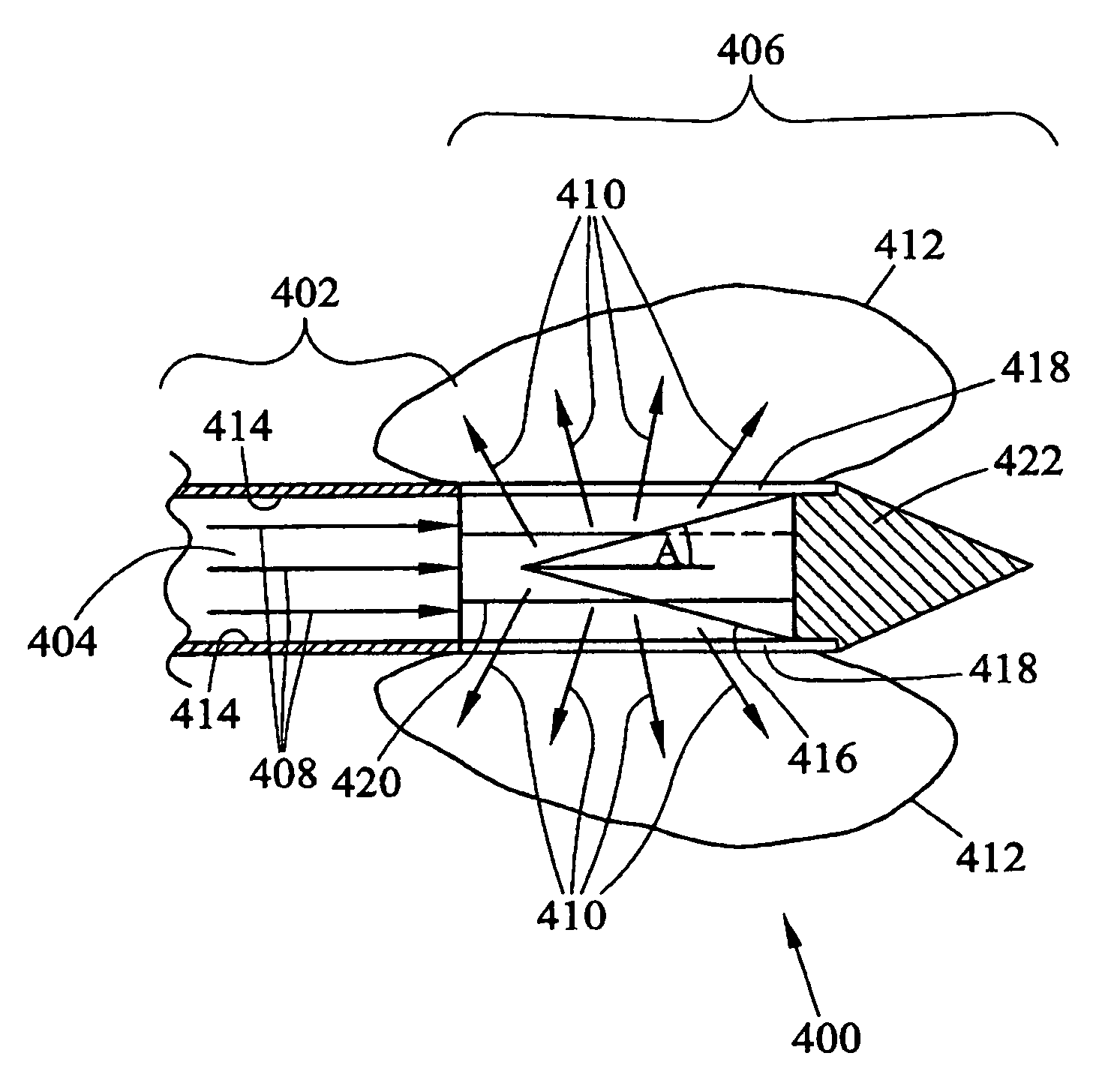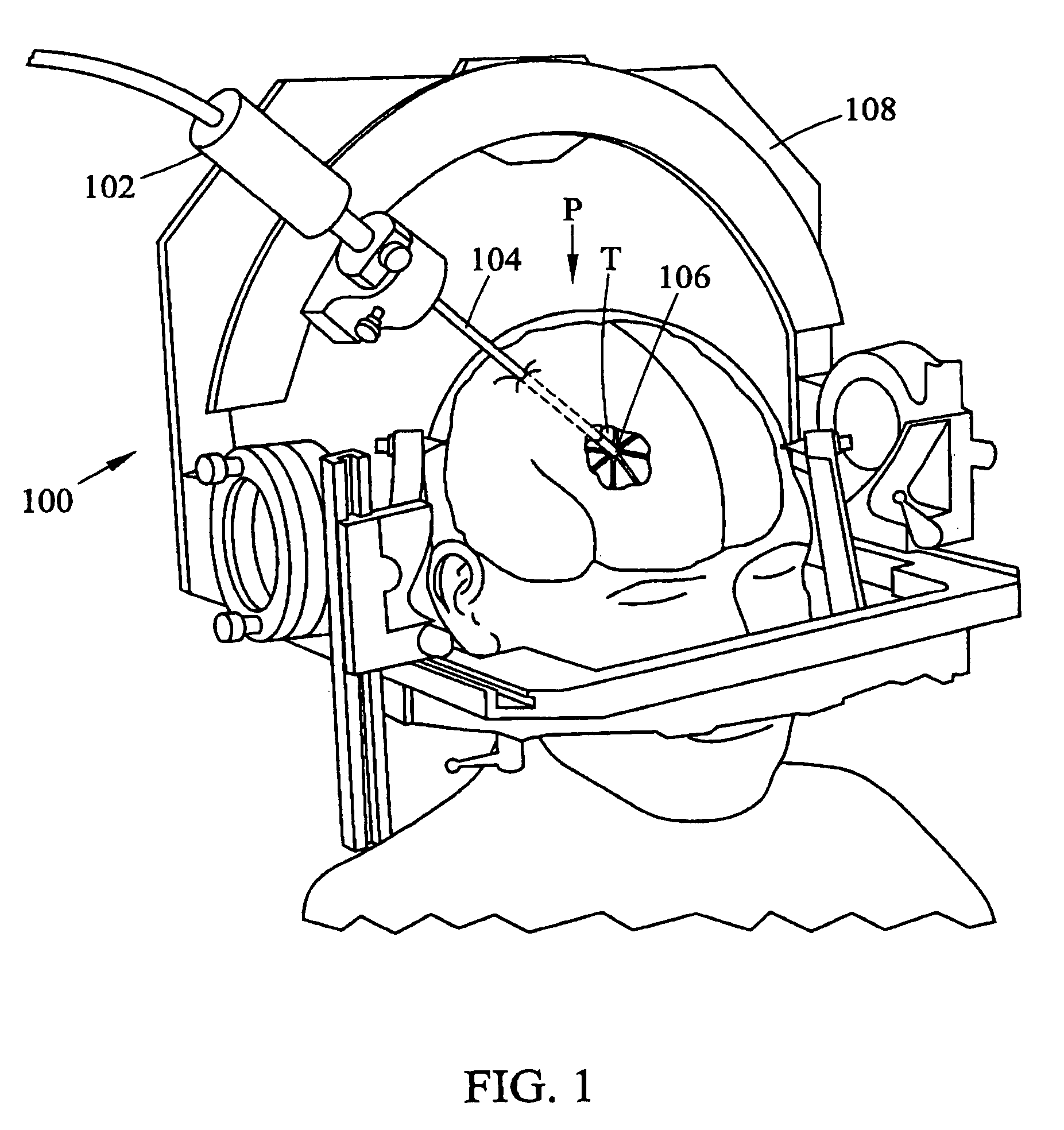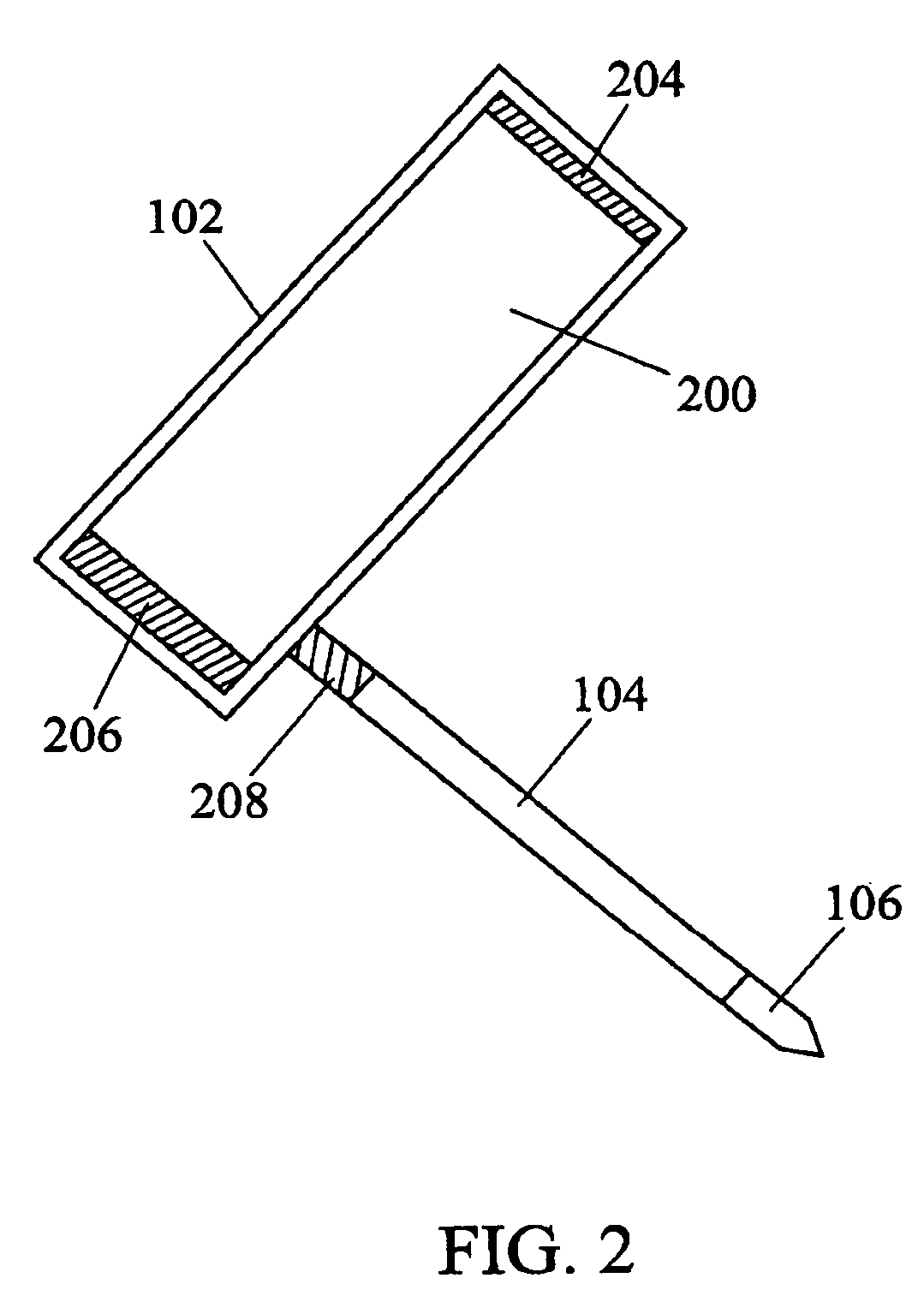Devices and methods for targeting interior cancers with ionizing radiation
a technology of ionizing radiation and tumors, applied in the field of devices and methods for delivering therapeutic ionizing radiation to interior cancerous tissues, can solve the problems of environmental and security issues regarding the disposal of these radioactive sources, the limited use of these techniques, and the inherent risk of a radiation source that cannot be turned o
- Summary
- Abstract
- Description
- Claims
- Application Information
AI Technical Summary
Benefits of technology
Problems solved by technology
Method used
Image
Examples
Embodiment Construction
[0029] Radiation delivery devices and methods enabling the precise delivery of ionizing radiation to designated target tissues, such as interior cancers, are described herein. These radiation devices and related methods also facilitate delivering therapeutic radiation with minimal radiation, heat deposition, and voltage into adjacent normal tissue. These devices and methods are described with regard to the accompanying drawings. It should be appreciated that the drawings do not constitute limitations on the scope of the disclosed devices and methods.
[0030] Radiation delivery devices as described herein are capable of delivering x-ray radiation for treating interior tissues. These radiation delivery devices can deliver x-ray radiation directly to a cancer site without significant energy deposition in normal tissue surrounding the cancer site. The volume through which the radiation is deposited can be selected to deliver therapeutic dosages precisely to a cancerous tumor or for other...
PUM
 Login to View More
Login to View More Abstract
Description
Claims
Application Information
 Login to View More
Login to View More - R&D
- Intellectual Property
- Life Sciences
- Materials
- Tech Scout
- Unparalleled Data Quality
- Higher Quality Content
- 60% Fewer Hallucinations
Browse by: Latest US Patents, China's latest patents, Technical Efficacy Thesaurus, Application Domain, Technology Topic, Popular Technical Reports.
© 2025 PatSnap. All rights reserved.Legal|Privacy policy|Modern Slavery Act Transparency Statement|Sitemap|About US| Contact US: help@patsnap.com



